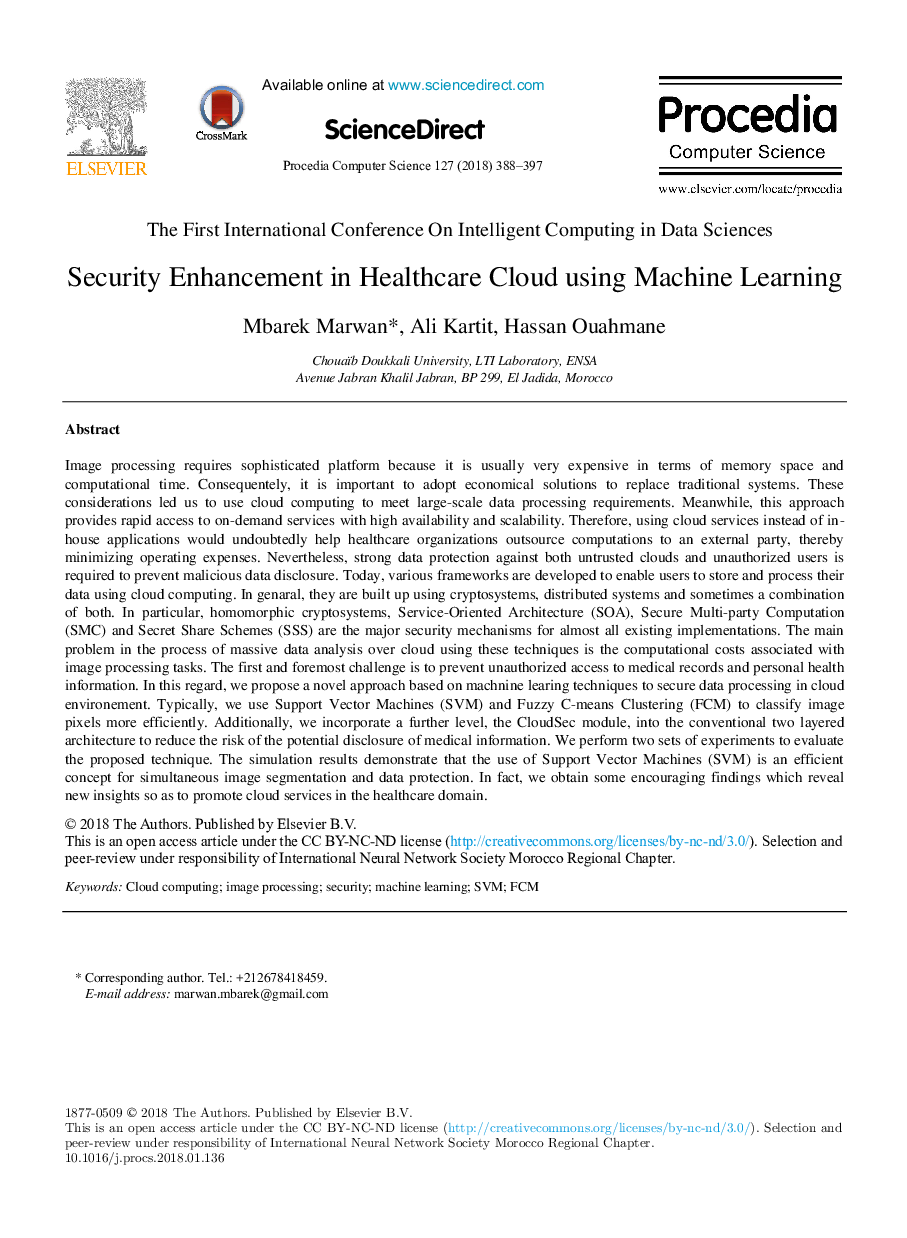| Article ID | Journal | Published Year | Pages | File Type |
|---|---|---|---|---|
| 6900500 | Procedia Computer Science | 2018 | 10 Pages |
Abstract
Image processing requires sophisticated platform because it is usually very expensive in terms of memory space and computational time. Consequentely, it is important to adopt economical solutions to replace traditional systems. These considerations led us to use cloud computing to meet large-scale data processing requirements. Meanwhile, this approach provides rapid access to on-demand services with high availability and scalability. Therefore, using cloud services instead of in-house applications would undoubtedly help healthcare organizations outsource computations to an external party, thereby minimizing operating expenses. Nevertheless, strong data protection against both untrusted clouds and unauthorized users is required to prevent malicious data disclosure. Today, various frameworks are developed to enable users to store and process their data using cloud computing. In genaral, they are built up using cryptosystems, distributed systems and sometimes a combination of both. In particular, homomorphic cryptosystems, Service-Oriented Architecture (SOA), Secure Multi-party Computation (SMC) and Secret Share Schemes (SSS) are the major security mechanisms for almost all existing implementations. The main problem in the process of massive data analysis over cloud using these techniques is the computational costs associated with image processing tasks. The first and foremost challenge is to prevent unauthorized access to medical records and personal health information. In this regard, we propose a novel approach based on machnine learing techniques to secure data processing in cloud environement. Typically, we use Support Vector Machines (SVM) and Fuzzy C-means Clustering (FCM) to classify image pixels more efficiently. Additionally, we incorporate a further level, the CloudSec module, into the conventional two layered architecture to reduce the risk of the potential disclosure of medical information. We perform two sets of experiments to evaluate the proposed technique. The simulation results demonstrate that the use of Support Vector Machines (SVM) is an efficient concept for simultaneous image segmentation and data protection. In fact, we obtain some encouraging findings which reveal new insights so as to promote cloud services in the healthcare domain.
Related Topics
Physical Sciences and Engineering
Computer Science
Computer Science (General)
Authors
Mbarek Marwan, Ali Kartit, Hassan Ouahmane,
